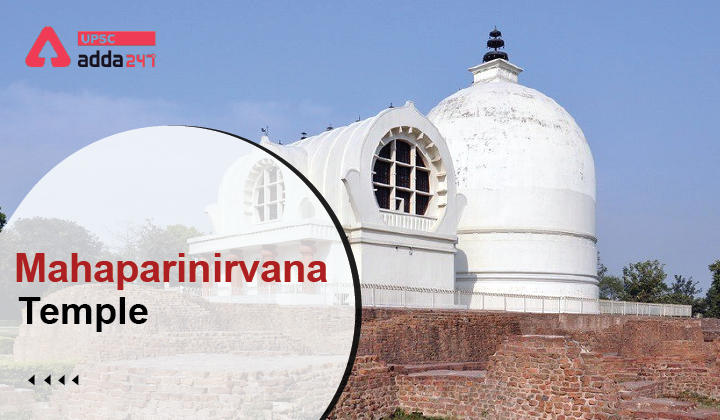Table of Contents
Mahaparinirvana Temple- Relevance for UPSC Exam
- GS Paper 1: Indian History- Indian culture will cover the salient aspects of Art Forms, Literature and Architecture from ancient to modern times.
Mahaparinirvana Temple in news
- Recently, the Prime Minister, Shri Narendra Modi, offered prayers at the Mahaprinirvana Stupa at Kushinagar, Uttar Pradesh, on the occasion of Buddha Purnima.
Mahaparinirvana Temple- More on News
- He also performed the shilanyaas ceremony for construction of the India International Centre for Buddhist Culture and Heritage in the Lumbini Monastic Zone.
- Shri Modi also attended the 2566thBuddha Jayanti Celebrations at International Convention Center and Meditation Hall at Lumbini along with the Prime Minister of Nepal.
Mahaparinirvana Diwas: Death Anniversary of BR Ambedkar
Key Points about Mahaparinirvana Temple
- About: Mahaparinirvana Temple is said to be theplace of death of Gautama Buddha, the founder of Buddhism.
- Location: Mahaparinirvana Stupa is a Buddhist temple in Kushinagar, India.
- Discovery: Alexander Cunningham conclusively proved that Gautama Buddha had died in the Kushinagar area.
- Construction: Indian Government built the present Mahaparinirvana Temple in 1956.
- Mahaparinirvana Temple was built as part of the commemoration of the 2,500th year of the Mahaparinivana or 2500 BE (Buddhist Era).
Features of Mahaparinirvana Temple
- The Mahaparinirvana statue is 6.1 m long and rests on a stone couch. The monolithic statue of Buddha is built out of a single piece of red sandstone of Chunar.
- Mahaparinirvana statue shows him reclining on his right side with his face facing the west.
- It was considered the right posture for Mahaparinirvana.
- There is an inscription on the platform stating that it was built by Swami Haribala, a disciple of the Buddha in 5th century AD.
- Both the temple and the vihar were a gift of a grateful disciple to his august teacher.
Buddhist Monuments in Kushinagar
- Attainment of Mahaparinirvana: Buddha ordained his last disciple and uttered his last words to the sangha and attained Parinirvana in 487 BCE.
- After 45 years of missionary activities, the Buddha, severely stricken with illness, finally reached to Kushinagar where he died in 487 BCE.
- Buddhist Monuments:
- Maurayan Empire: In 260 BCE, Maurya king Ashoka reportedly visited Kushinagar where he built several caityas, stupas to honor the Buddha’s place of Nirvana.
- Kushan Empire: Buddhist sites in Kushinagar were steadily expanded during the Kushan empire (c. 50-241 CE)
- Gupta Age: Kushinagar witnessed a golden age during the Gupta empire(c. 320-647 CE). The Parinirvana Stupa was largely expanded and Parinirvana Temple was reconstructed along with a huge reclining Buddha statue.
Buddhism: Origin and Teachings of Buddha
New museums on Gautam Buddha, J&K and freedom struggle
adda247.com/…/new-museums-on-gautam-buddha-jk-and-freedom-struggle





 TSPSC Group 1 Question Paper 2024, Downl...
TSPSC Group 1 Question Paper 2024, Downl...
 TSPSC Group 1 Answer key 2024 Out, Downl...
TSPSC Group 1 Answer key 2024 Out, Downl...
 UPSC Prelims 2024 Question Paper, Downlo...
UPSC Prelims 2024 Question Paper, Downlo...




